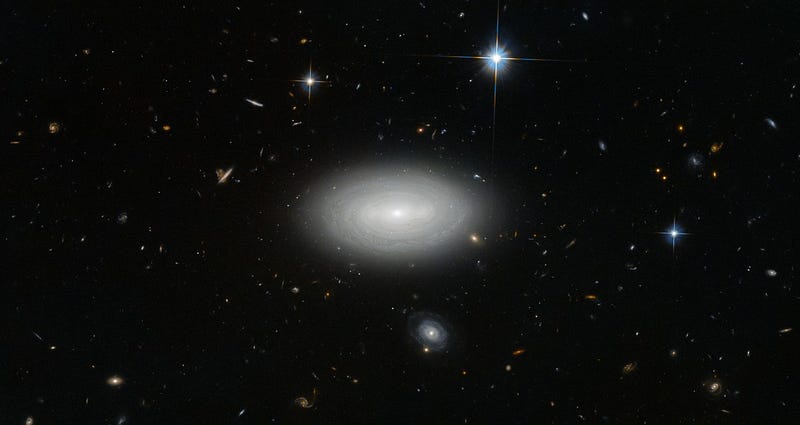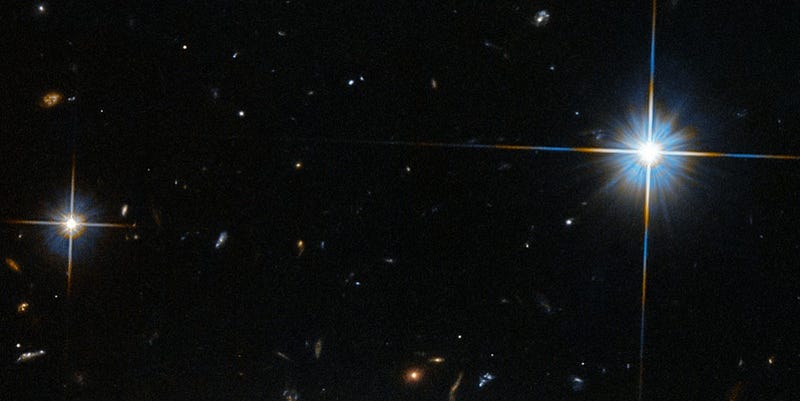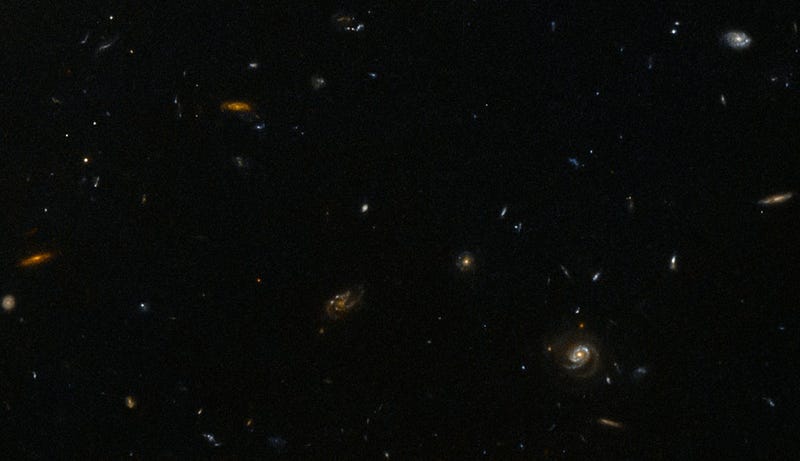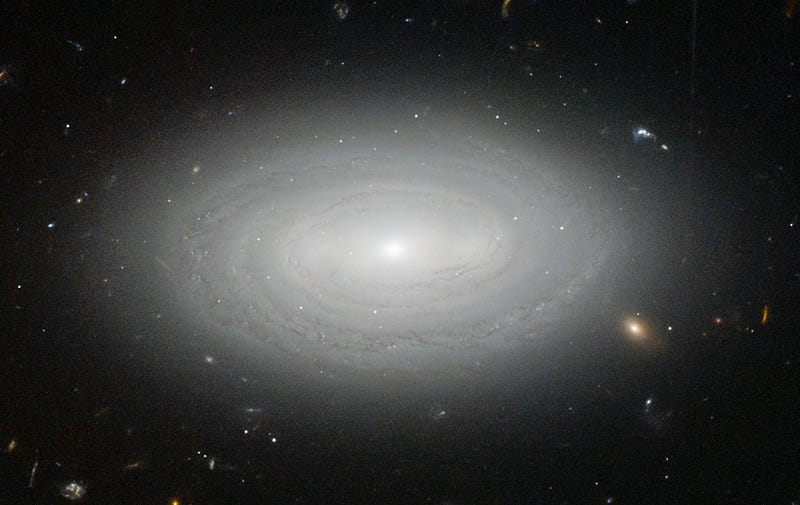The loneliest galaxy in the Universe

From the Milky Way’s perspective, there are hundreds of galaxies visible with even a small telescope. But from this galaxy’s location? Zero.
“If the expansion of the space of the universe is uniform in all directions, an observer located in anyone of the galaxies will see all other galaxies running away from him at velocities proportional to their distances from the observer.” –George Gamow
One hundred years ago, Einstein put forth his theory of General Relativity, replacing Newton’s concepts of absolute space and time with a dynamic fabric — spacetime — that would not only curve dependent on the matter-and-energy present within, but would expand or contract depending on some global properties of the Universe. Theorists like Alexander Friedmann, Willem de Sitter and Georges Lemaître worked out many of the mathematical details and consequences, but it was Edwin Hubble, armed with the 100-inch telescope atop Mt. Wilson, who gave us the Universe as we understand it today.

By looking at the distant galaxies — the spirals (and later, ellipticals) in the deep night sky — he was able to not only deduce that the Universe was expanding, but to measure its expansion rate for the first time. The more distant a galaxy appeared from us, on average, the faster it appeared to move away from us. Over the subsequent decades, as telescope, photographic and camera technology improved, the galaxies we could measure became deeper and fainter, and our understanding of how the Universe expands has continued to improve.
But all of this was possible only for one chance fact about our location in the cosmos: that there are hundreds of thousands of big, bright galaxies within a few hundred million light years of Earth.
We learn about our place in the Universe from observing what’s around us. As it turns out, though, not every location in the Universe is as fortunate as we are. Consider, for example, the following image: of galaxy MCG+01–02–015.

It looks like it’s surrounded by other galaxies, and perhaps it is from a certain perspective. But if we were to take that “flight through the Universe” video around MCG+01–02–015′s neighborhood, the number of galaxies we’d encounter along that flight would be zero.
To the best of our knowledge — using Hubble Deep Field-quality observations — this galaxy is all by its lonesome for some hundred million light years in all directions.

The bright stars, highlighted by the diffraction spikes around them, that you see are actually within our own galaxy. This ultra distant galaxy is larger and brighter than our own Milky Way, and contains over a trillion stars, perhaps some 5-to-10 times as many as our own galaxy.
And well past it, just as in many locations in the Universe, you can see the great cosmic backdrop of galaxies that appear in every broad direction and location we’ve ever looked.

There are other galaxies as well in the general field, but these are either much closer to us (and hence, very far from the main galaxy) than our perspective-free image would indicate, like the spiral below,

or they’re much, much farther away, like the yellow elliptical you can see peeking out behind the main galaxy’s right limb. These void galaxies, located far, far away from any others, are made up of gas that is largely untouched — other than what formed all on its own — by any other clumps of matter that came about since the Big Bang.

No, we would have come up empty if we were looking for the expanding Universe if we were this galaxy instead. The telescope that Hubble used to make his Universe-changing discovery was commissioned in 1917, yet we would have found absolutely no other galaxies at all from MCG+01–02–015′s perspective throughout all of the 1920s, 30s, 40s and 50s.
Would we have stopped looking? Would we have concluded that we were the only galaxy in the Universe, and never have discovered things like the expanding Universe, the Big Bang, and dark matter, which all require other galaxies to reveal themselves to us? How fortunate we are, around the darkest time of the year, that the entire Universe made it easy for us to discover it. How unfortunate must an inhabitant of this distant, lonely galaxy be, that the Universe itself seems to be conspiring to hide itself.
And it makes you wonder, just a little bit, in what ways is our galaxy and our position in the Universe unusual, and what incorrect assumptions are we making because we only have one point-of-view to call our own?
Leave your comments on our forum, and check out our first book: Beyond The Galaxy, available now, as well as our reward-rich Patreon campaign!





